I woke up this morning to a beautiful early-autumn morning: 16°C, low humidity, clear skies, and a gentle breeze. Parker celebrated by eating a live cicada, which made the mistake of buzzing when he sniffed it.
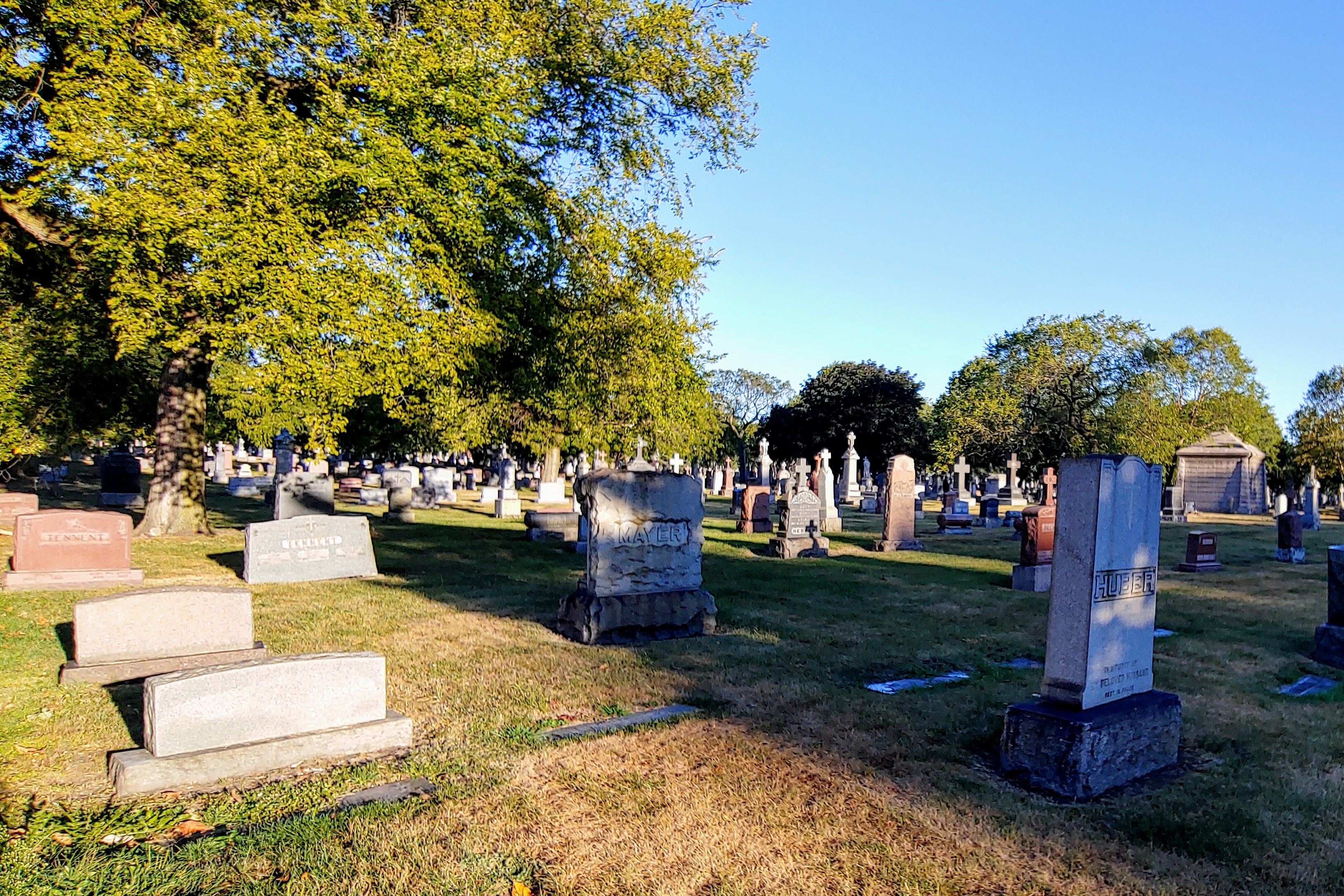
My plan today? Starting as close to 9:09 am as practical, I'm going to walk up to Lake Bluff, about 42 km. Full report when I recover.
I'm glad I took a long walk yesterday and not today, because of this:
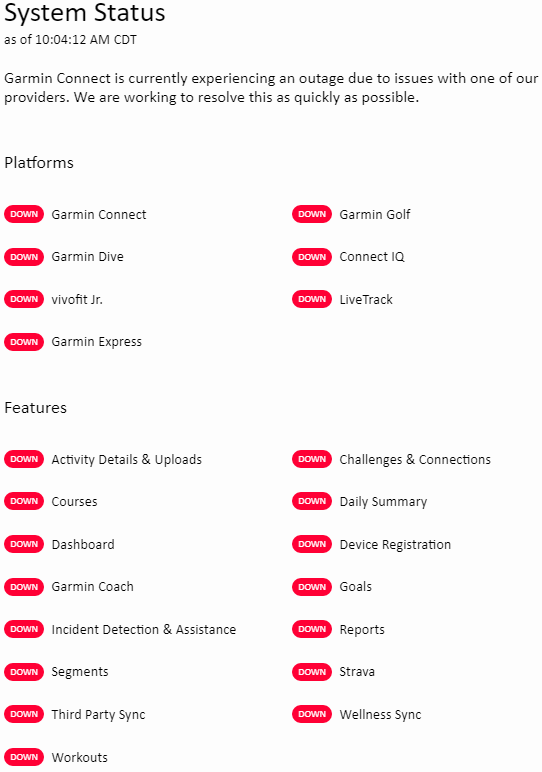
In other news:
- State health officials warn that suburban Cook County (the immediate suburbs surrounding Chicago) has experienced a resurgence in Covid-19 cases, and placed it and 29 other counties on warning that social restrictions could resume next week.
- Moreover, Covid-19 leads in a massive wave of excess deaths reported by the Cook County Medical Examiner this week. Suicides, homicides, and overdoses are also at near-record levels.
- Jonathan Russo, writing in TPM Cafe, lays out the case that Russian dictator Vladimir Putin got what he wanted with his meddling in the 2016 US elections, and stands to gain even more if the president wins (or somehow achieves) re-election.
- The nationalist, right-wing disease has started to infect Canada as well, as their new Conservative Party leader Erin O'Toole has adopted a "Canada First" platform.
- Graceland Cemetery, which doubles as an arboretum, will be closed for the longest period in its 160-year history because of damage from the August 10th derecho.
- Mother Jones obtained video from a 10 December 2015 deposition showing Donald Trump boasting about his lack of ethics and ignorance of the law.
Finally, the American Academy of Sleep Medicine has called for an end to Daylight Saving Time—not just the twice-annual time changes associated with the practice.
Today is not only a Saturday, it's also the first day all week under 32°C. So I took a little 26 km walk around the neighborhood. It felt good, and I maintained a Chicago Marathon-qualifying pace throughout. I also underestimated my water needs by half, so I've drunk about two liters since I got home.
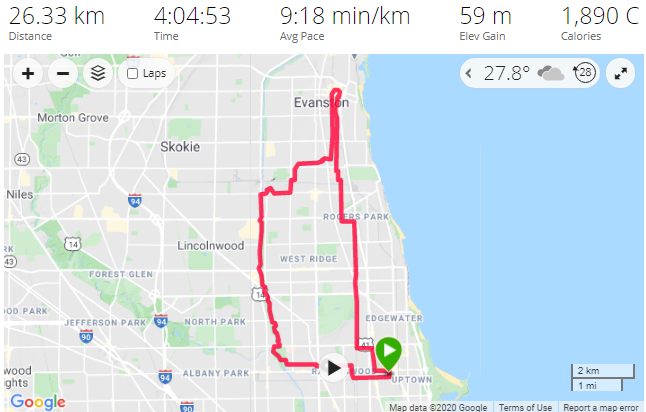
And now, I must go to the store. Yay.
I kind of got into the flow today, so things to read later just piled up:
And wait—you can make risotto in an Instant Pot? I might have to try that.
Four days after I switched from Fitbit to Garmin, all of Garmin's online services have gone offline:
The problems with those services also mean that a range of features can't be used on Garmin's own devices: it is not possible to create new routes to go running or cycling, for instance, or to share those activities on services like Strava once they are completed.
The devices themselves continue to work as normal with the data they do have, however, meaning that any data collected during the outage will be safe.
Garmin wrote on its official Twitter pages that the problems were also affecting its call centres, leaving users unable to get in touch through calls or online messages.
"We are currently experiencing an outage that affects Garmin Connect, and as a result, the Garmin Connect website and mobile app are down at this time," it wrote.
"This outage also affects our call centres, and we are currently unable to receive any calls, emails or online chats. We are working to resolve this issue as quickly as possible and apologise for this inconvenience."
This is not what Garmin customers want to see:
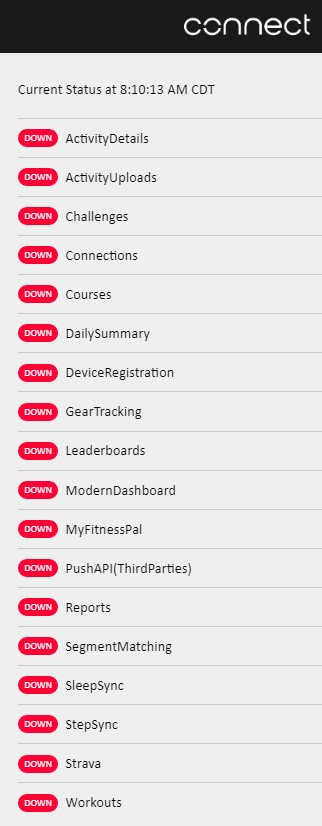
The error message on the Garmin Connect website suggests the problem is with their Cloudflare equipment:

Update: Based on Garmin employee's social-media posts, ZDNet now reports that the company experienced a catastrophic ransomware attack, most likely a new strain of WastedLocker. Fortunately, my Venu can hold 200 hours of data. So as long as they get it back up within a week or so, I shouldn't lose anything—unless the ransomware attack already destroyed my data from this past week.
I wore both my old Fitbit Ionic and new Garmin Venu for about 42 hours straight. Yesterday they overlapped for the entire day. And they came in with similar, but not quite the same, numbers.
I thought that my Fitbit would record fewer steps overall, because it recorded about 450 (about 7%) fewer on my walk yesterday. For the whole day, though, the Fitbit counted 14,190 to the Garmin's 13,250—7% more. But I wore the Fitbit on my right (dominant) wrist, so it may have just had more activity in general.
In other basic measures:
- The Fitbit recorded 13.3 km to the Garmin's 10.6 km;
- The Fitbit estimated my resting heart rate as 64 to the Garmin's 65;
- Fitbit counted 82 "active" minutes to the Garmin's 359 "moderate" and 369 "vigorous";
- Fitbit estimated my calorie burn at 3,100 to Garmin's 2,862.
I have no way to know which tracker was more accurate, but I might bet a dollar on the Garmin. I think the Garmin used actual distance to the Fitbit's estimate based on my usual stride length, which doesn't account for all the difference.
The Garmin's app presentation is so far beyond Fitbit's I wonder whether Fitbit even has software developers. Here's Fitbit:
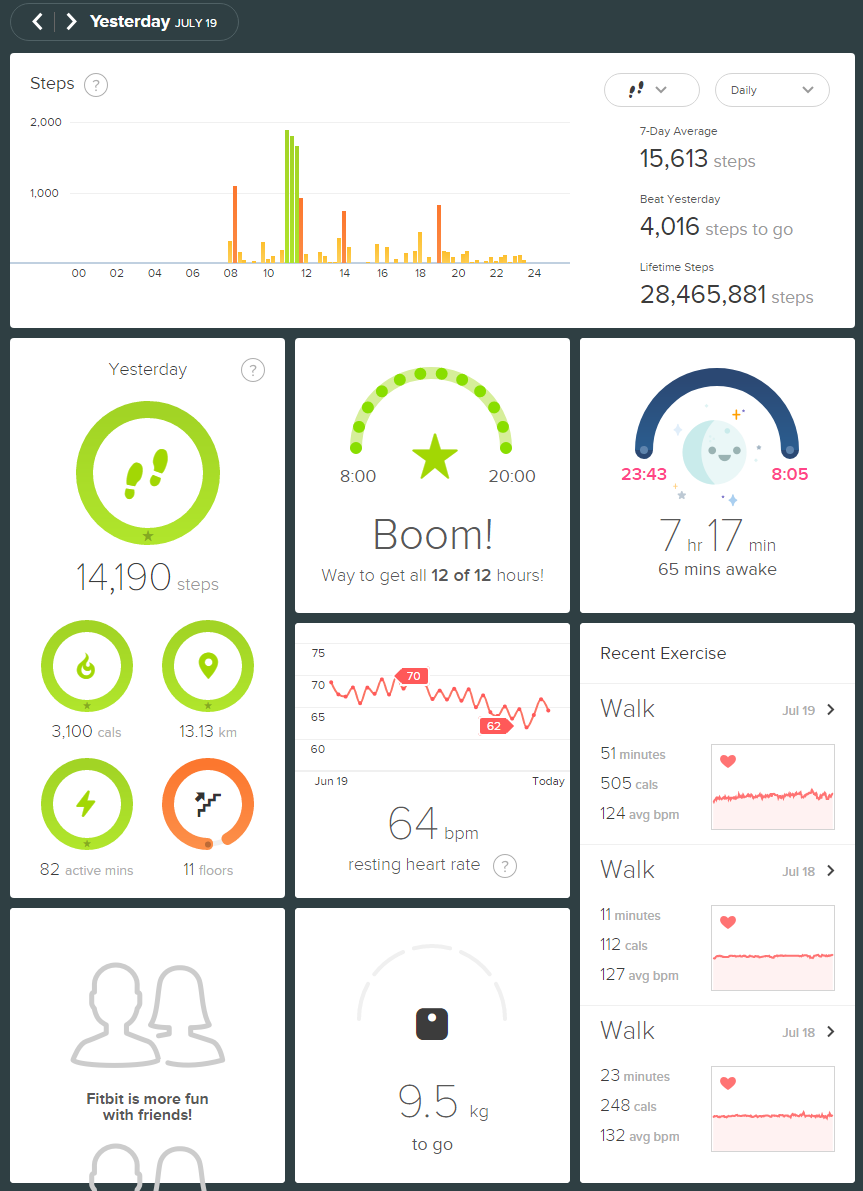
Here's Garmin's:
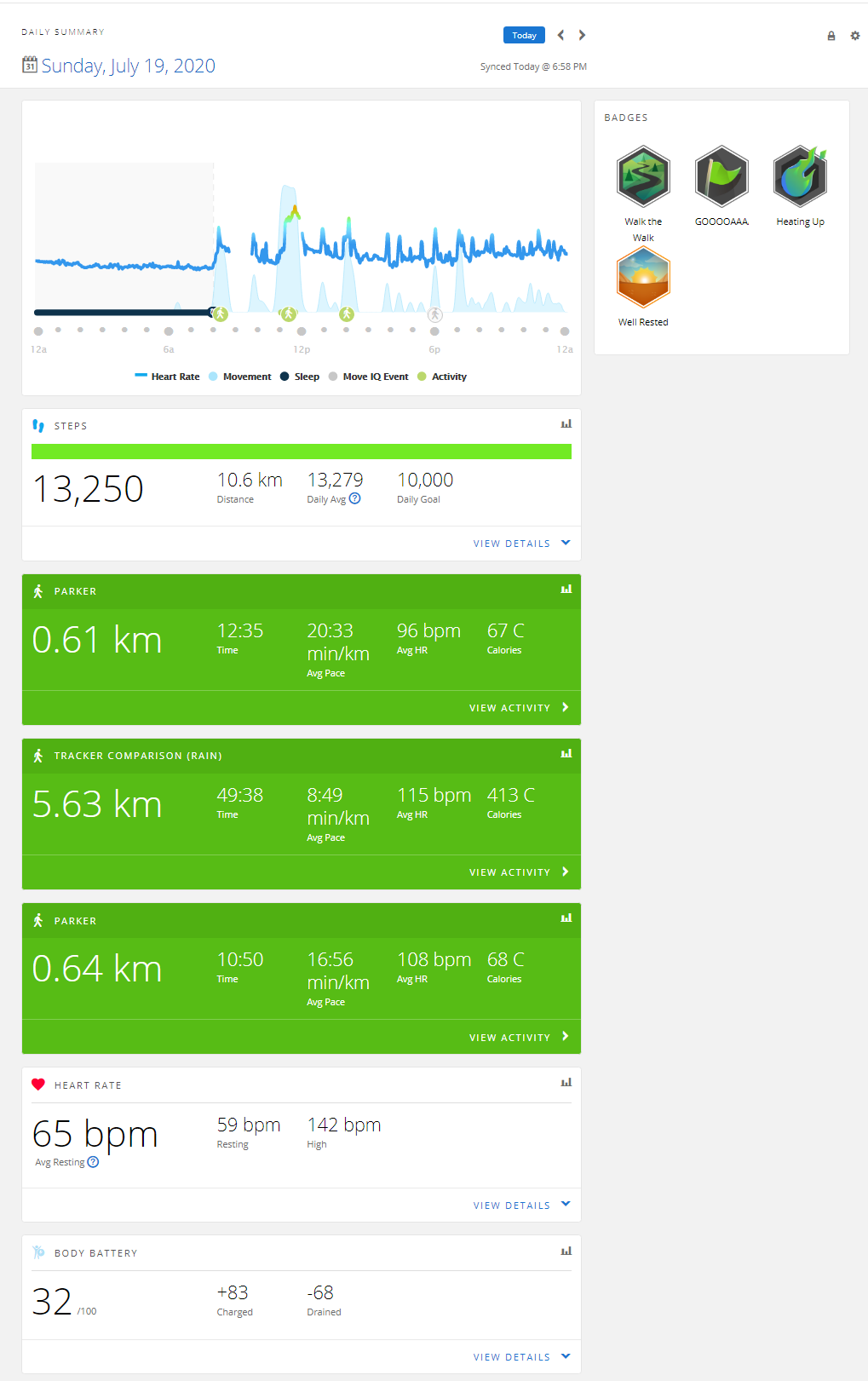
And that's not even all of the Garmin data.
I walked halfway home after work today, and once again, the Garmin tracked my workout better than the Fitbit has done in months.
I'm glad I switched.
I'll get to the final head-to-head comparison between my Garmin Venu and Fitbit Ionic later today. Meanwhile:
And finally, because our Covid-19 numbers have started creeping up, indoor bar service will halt on Friday.
Before I get to the technical bits comparing the Garmin Venu (now on my left wrist) to the Fitbit Ionic, let me just list some "learnings" today:
- Both trackers are waterproof as advertised, as is my phone.
- I am glad that I keep a towel by my back door.
- I am glad that my washing machine—and, let's face it, my dryer—is by my back door.
- There comes a point where one's clothes have absorbed so much water that it really doesn't matter how much more water they will encounter.
I have no one to blame but myself. This is the radar picture 10 minutes into the walk:
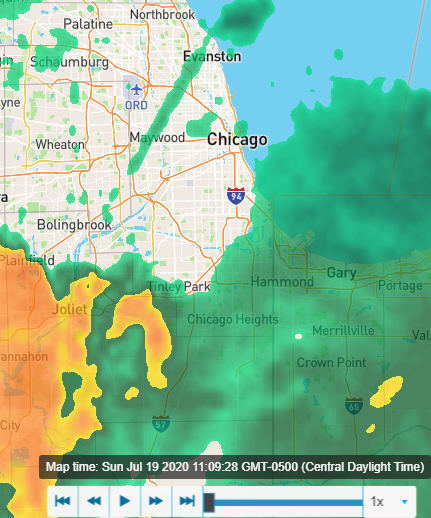
And 40 minutes in:
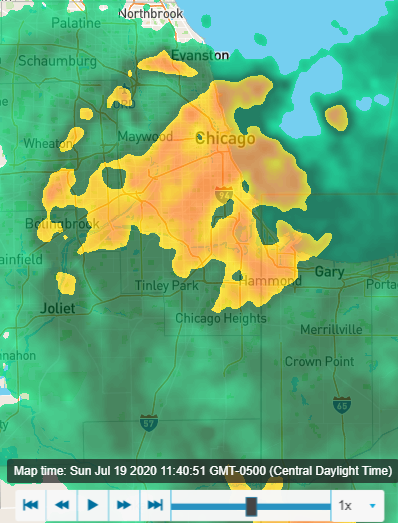
Result:

But enough about me. This post is really about fitness trackers.
In sum, the main difference between the Garmin and the Fitbit remains the Fitbit's total GPS failure, and the paucity of data Fitbit provides on its app compared with Garmin.
Here's the Fitbit data:
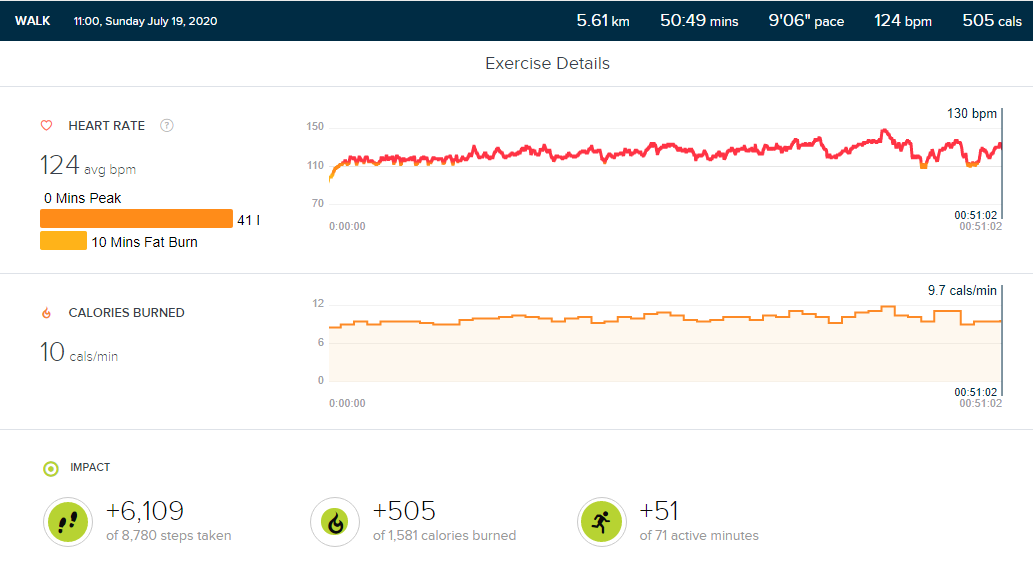
And the Garmin data:
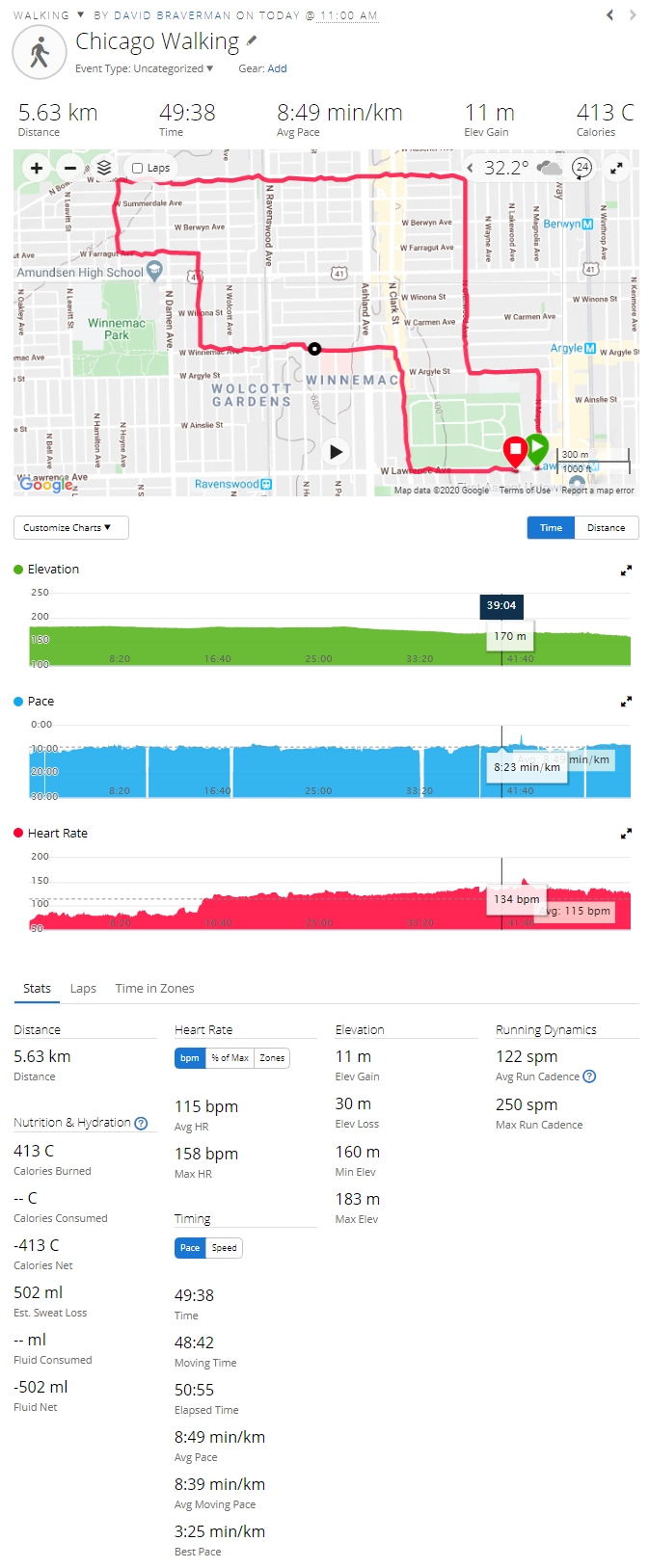
I am pleased, however, that both trackers got almost exactly the same distance, given that the Garmin tracked distance using actual data and the Fitbit guessed based on my stride length. They don't agree on how many calories I burned, how many steps I took: the Garmin said 6,556, while the Fitbit said 6,109. So far today, my Garmin says 9,127 to Fitbit's 9,047, which adds data to my hypothesis that my Fitbit has always under-counted.
So, other than the rain, I thought this test went well.
Despite the Garmin Venu handing the Fitbit Ionic its ass in my first test of exercise tracing, the Fitbit didn't fail completely in sleep tracking.
Based on my self-perception of how well I slept, including my (and Parker's) acute awareness of the squall line that pushed through around 6:30, I think the Fitbit might have recorded my awake time more accurately. The Garmin, however, also recorded pulse oxygen, respiration, and can display movement on the UI.
Here's the Fitbit results:
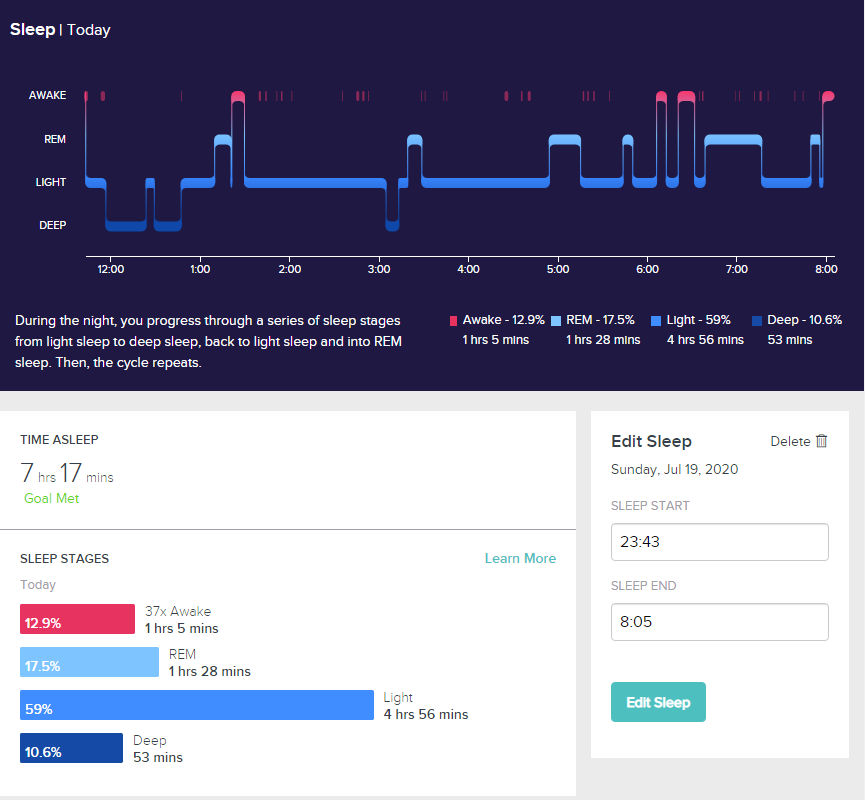
And Garmin:
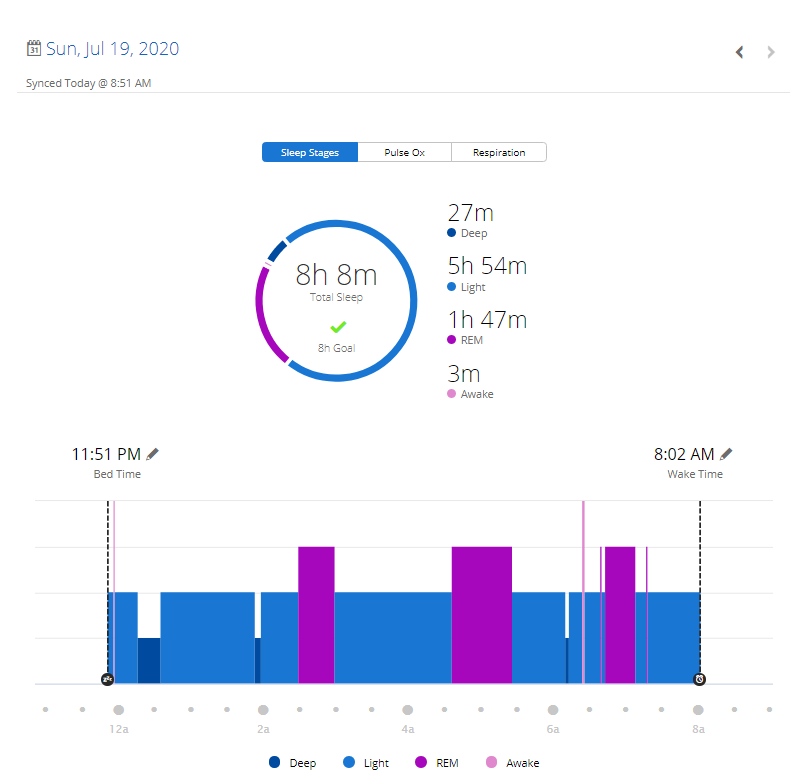
Also, yesterday my Fitbit counted 18,206 steps to the Garmin's 12,142—but I put the Garmin on my wrist at 1pm. Adding the 6,963 the Fitbit recorded before 1pm, that means the Garmin and Fitbit differed by (19,105 – 18,206 = ) 899, or 4.7% for the 11 hours between 1pm and midnight. Today I'm using both of them, though I switched wrists (yesterday the Garmin was on my dominant side; today it's not).
The thunderstorms from earlier have pushed on through the area, so once I digest my omelet and my Garmin fully charges, I'll do a longer test of exercise tracking.
Yeah, the Garmin wins, hands down.
After realizing that my first head-to-head test pitted an Ionic whose GPS was failing against a treadmill exercise, I went out for a quick loop around the block with both trackers correctly set to "Walk."
The Garmin found a GPS signal in about 20 seconds. The Fitbit never did.
After the walk, the Garmin produced this delightful map, complete with weather report and options for different maps:
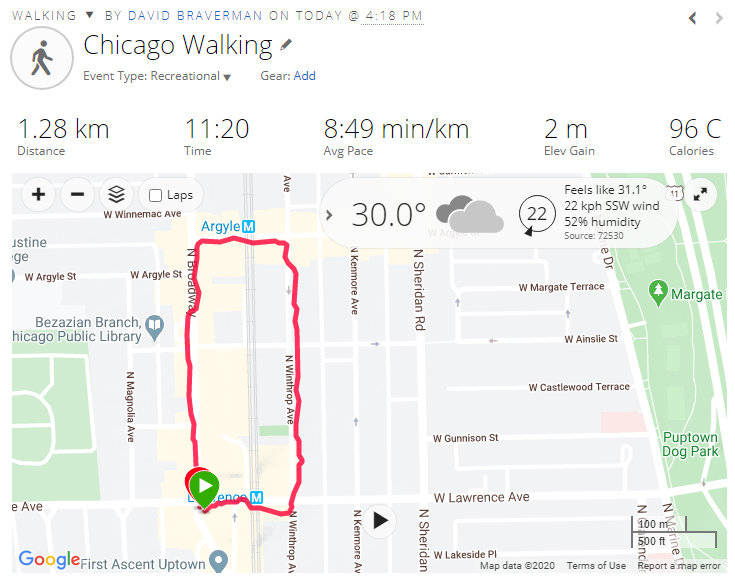
Right on the activity view, I've got a gear icon with these options:

Fitbit only exports TCX files. Or you can export your entire account archive, become a programmer like me, parse your archive, and extract the relevant item.
But the map and export options just scratch the surface. Look what the Fitbit Web app gives me for this walk (since it didn't have GPS):
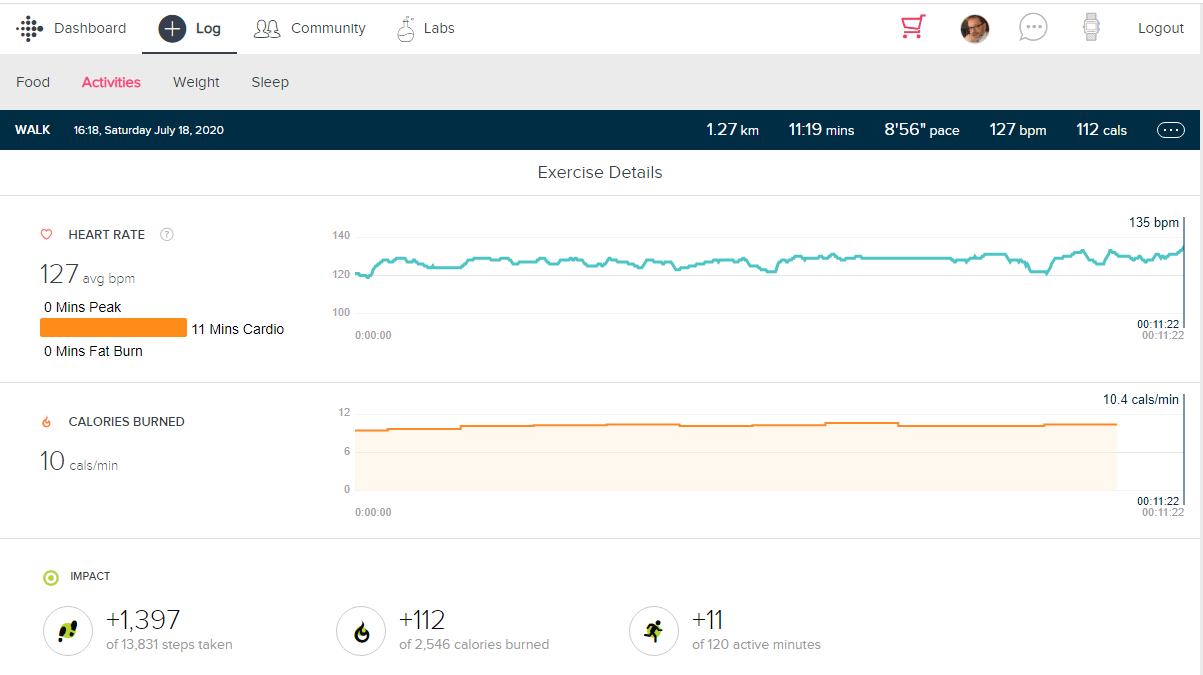
And here's the Garmin:
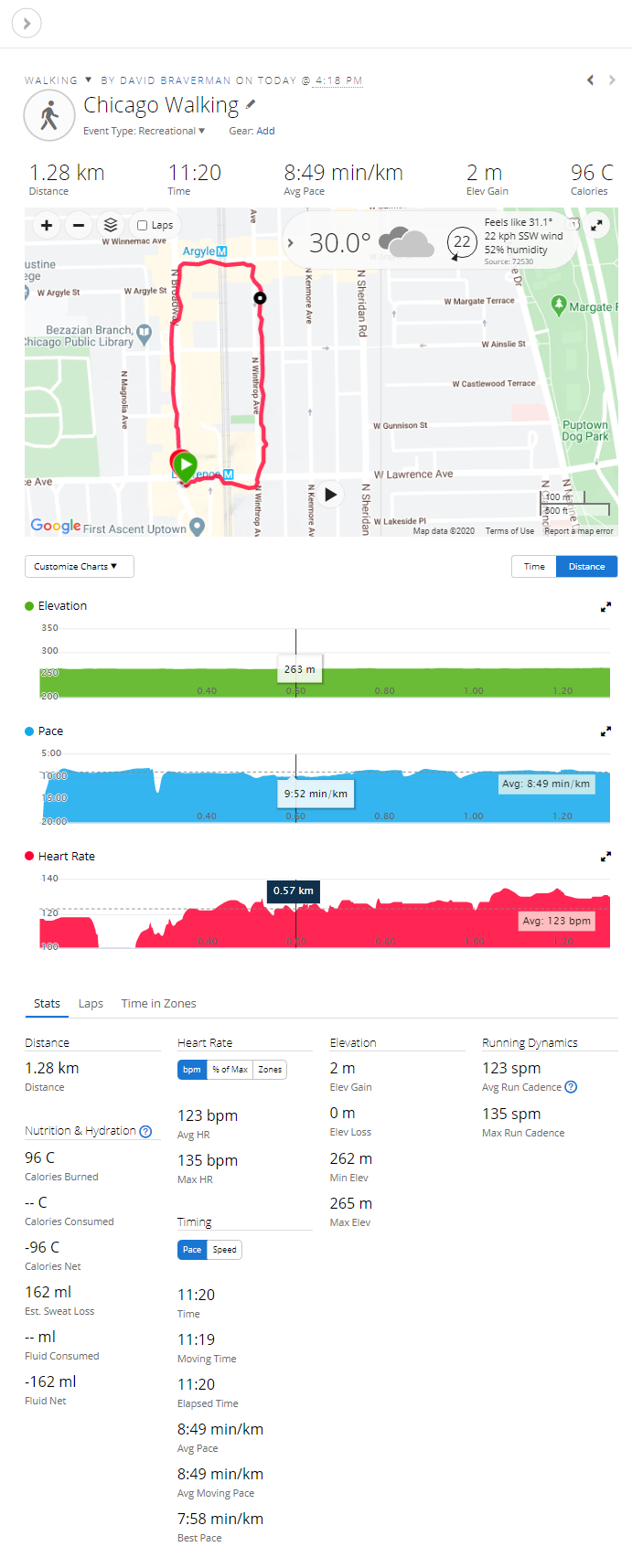
I mean, that's not even fair. Garmin even gave me the weather report, fer gassake. (It did not give me the step count for the activity, though.
Yeah. Fitbit, you were great, but I've grown; you haven't. You fell so far behind Garmin that I don't know how you're going to catch up.
Tonight, I'll see how differently they track sleep. And I hope that I can re-import today's Fitbit steps, else I'll lose the 7,000 I had before I set up the Garmin. Also, Garmin only imports step counts, intensity times, and body mass from Fitbit, not sleep data, so I'll have to find a different solution for that.